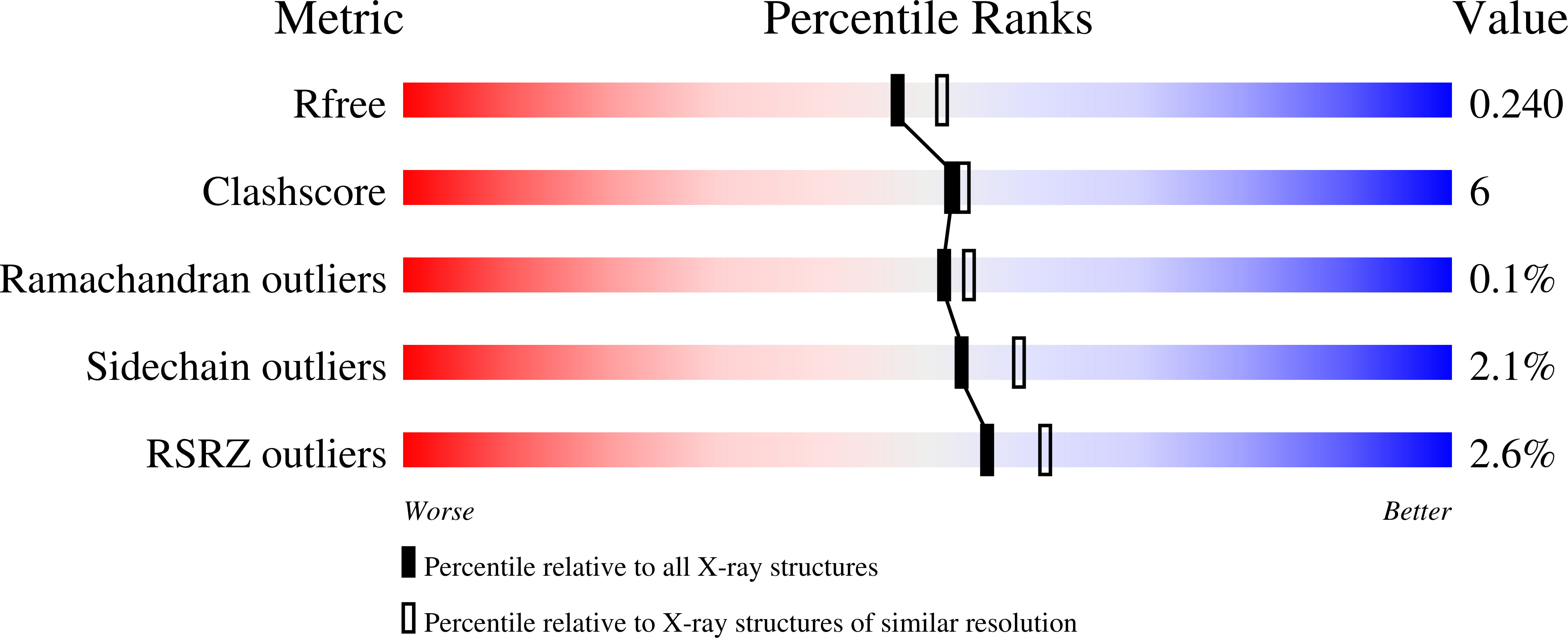Discovery and Characterization of a Novel Dihydroisoxazole Class of alpha-Amino-3-hydroxy-5-methyl-4-isoxazolepropionic acid (AMPA) Receptor Potentiators.
Patel, N.C., Schwarz, J., Hou, X.J., Hoover, D.J., Xie, L., Fliri, A.J., Gallaschun, R.J., Lazzaro, J.T., Bryce, D.K., Hoffmann, W.E., Hanks, A.N., McGinnis, D., Marr, E.S., Gazard, J.L., Hajos, M., Scialis, R.J., Hurst, R.S., Shaffer, C.L., Pandit, J., O'Donnell, C.J.(2013) J Med Chem 56: 9180-9191
- PubMed: 24215237
- DOI: https://doi.org/10.1021/jm401274b
- Primary Citation of Related Structures:
4LZ5, 4LZ7, 4LZ8 - PubMed Abstract:
Positive allosteric modulators ("potentiators") of α-amino-3-hydroxy-5-methyl-4-isoxazolepropionic acid (AMPA) receptors (AMPAR) enhance excitatory neurotransmission and may improve the cognitive deficits associated with various neurological disorders. The dihydroisoxazole (DHI) series of AMPAR potentiators described herein originated from the identification of 7 by a high-throughput functional activity screen using mouse embryonic stem (mES) cell-derived neuronal precursors. Subsequent structure-based drug design using X-ray crystal structures of the ligand-binding domain of human GluA2 led to the discovery of both PF-04725379 (11), which in tritiated form became a novel ligand for characterizing the binding affinities of subsequent AMPAR potentiators in rat brain homogenate, and PF-04701475 (8a), a prototype used to explore AMPAR-mediated pharmacology in vivo. Lead series optimization provided 16a, a functionally potent compound lacking the potentially bioactivatable aniline within 8a, but retaining desirable in vitro ADME properties.
Organizational Affiliation:
Pfizer Worldwide Research and Development, Groton Laboratories , 445 Eastern Point Road, Groton, Connecticut 06340, United States.

















